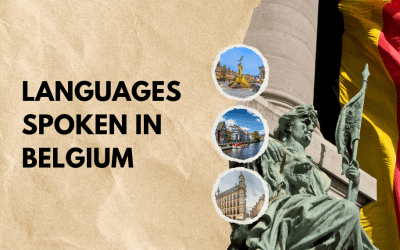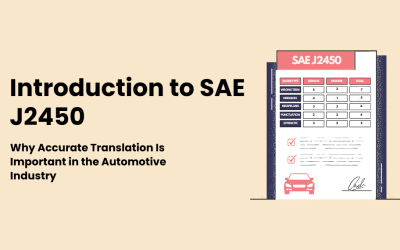For manufacturing companies to access global markets, compliance with international standards and directives has become necessary to ensure safety and quality, gain competitive advantage, and meet customer requirements.
The EU Machinery Directive 2006/42/EC is a regulation that sets essential health and safety requirements for machinery placed in the European market. Among its many requisites, the directive outlines specific language and EU translation requirements that manufacturers must adhere to.
This blog highlights these requirements in detail, providing insights into what needs to be translated, the responsibilities of manufacturers, and best practices for ensuring compliance.
Looking for Manufacturing Translation services ?
Milestone works with native translators with domain expertise to accurately translate your documents into 70+ languages. We provide translation certificates accepted by authorities across the globe.
What is the EU Machinery Directive 2006/42/EC?
The EU Machinery Directive 2006/42/EC aims to ensure the free movement of machinery within the European Economic Area (EEA) while guaranteeing a high level of protection for users and the environment.
It sets out essential health and safety requirements for machinery before being placed into the market or put into service in EU Member States. By standardizing these requirements, the directive helps to prevent accidents, reduce hazards, and promote the safe operation of machinery across EU member states.

Also Read: Essential Guide To Translate International Trade Documents
What does the EU Machinery Directive apply to?
The directive applies to:
- Machinery
- Interchangeable equipment
- Safety Components
- Lifting Accessories
- Chains
- Ropes & webbing
- Removable mechanical transmission devices and
- Partly completed machinery
The directive also applies to manufacturers located within and outside the EU seeking to introduce their products in one or more EU countries.
Language and translation requirements as per EU Machinery Directive 2006/42/EC
One of the critical aspects of the EU Machinery Directive 2006/42/EC is its emphasis on language and translation requirements.
These requirements ensure that users across different EU member states can understand and follow the safety instructions and information provided with the machinery.
According to the directive, several key documents must be translated into the official language(s) of the EU where the machinery is placed on the market or put into service. These include:
1. Instructions for Use
As mentioned in Annex I Section 1.7.4. Of the directive,
- All machinery must include instructions in the official language(s) of the EU Member State where it is sold or used.
- These instructions can be original or translated, with translations accompanied by the original.
- Maintenance instructions for specialized personnel may be in one language understood by them.
Instructions must be in an official EU language and labelled “Original instructions.”
If the original instructions are unavailable in the required official language, the manufacturer, authorized representative, or importer must provide a translation labelled “Translation of the original instructions.”
2. Information and warnings on the machinery
It is recommended that information and warnings on machinery use easily understandable, clear symbols or pictograms.
Any written or verbal warnings must be in the official language(s) of the member state where the machinery is placed or put into service. Additional EU languages or languages understood by operators can be included if requested.
Who is responsible for ensuring EU Machinery Directive translations?
The party placing a machine on the EU market is usually responsible for translations. This is typically the manufacturer but can also be:
- an authorized representative
- Distributor, or
- Importer
if they assist the manufacturer.
If an EU user imports a machine with untranslated instructions, they may translate them, but the manufacturer must ensure the accuracy of these translations as they remain responsible.
Manufacturers must ensure original instructions are accurately translated into other EU languages and should agree on translation responsibilities with distributors, importers, or users if involved.
Also Read: The Ultimate Guide To Manufacturing Translation
Languages to be translated to
The directive requires that translations be made into the official language(s) of the member state where the machinery is being marketed or used.

This means that if a piece of machinery is intended for multiple countries within the EU, the documentation must be translated into each of the respective languages.
In practice, this can mean translating documents into more than 20 languages, depending on the target markets.
Translations in compliance with the eu machinery directive
Milestone works with native translators with domain expertise to accurately translate your documents into 70+ languages. We provide translation certificates accepted by authorities across the globe.
Best practices for machinery and manufacturing translation

To ensure compliance with the directive and to facilitate the safe use of machinery, manufacturers should adhere to several best practices for translation:
1. Work with certified translation agencies
Collaborate with ISO-certified agencies, such as ISO 17100 and ISO 9001-certified translation agencies. These agencies have robust processes and stricter quality management systems to ensure accurate and high-quality deliverables.
They work exclusively with native speakers of the target language and possess technical and subject matter expertise.
2. Verify Technical Accuracy
Check whether the translation agency collaborates with industry experts to ensure translations are technically accurate and reflect the correct terminology used in the original documents.
3. Use of tools & technologies
Inquire about the tools and technologies used by the companies to streamline their processes and ensure consistent translations. Essential tools include translation style guides, terminology databases, computer-assisted translation tools (CAT tools), and translation memory. These resources help avoid confusion and ensure clarity.
4. Formatting & Desktop Publishing Services
Machinery and manufacturing documents often involve diagrams, and drawings that require proper formatting. So, check if the translation agency provides formatting and DTP services along with translations so that the final deliverables will be ready to use and the entire process will be taken care of from start to finish.
5. Quality Assurance process
Verify that the translation agency has a robust quality assurance process, including proofreading, editing, and additional quality checks to make sure the final translations are error-free and uphold the quality standards required by the EU Machine Directive.
Also Read: Localization & Translation Costs – Breakdown Of Factors Involved
Conclusion
Adherence to the EU Machinery Directive 2006/42/EC is crucial for manufacturing companies aiming to access global markets. This helps ensure safety, efficiency, and accuracy in machinery operations.
The directive set requirements for translating essential documentation into the official languages of EU member states where machinery is marketed or used.
By meeting these language requirements and following best practices for translation, manufacturers not only comply with legal obligations but also enhance user safety and facilitate smoother market entry across Europe.
Get in touch with us for your translations.
Also Read: A Comprehensive Guide To Navigate Technical Translation
Looking for Manufacturing Translation services ?
Milestone works with native translators with domain expertise to accurately translate your documents into 70+ languages. We provide translation certificates accepted by authorities across the globe.




